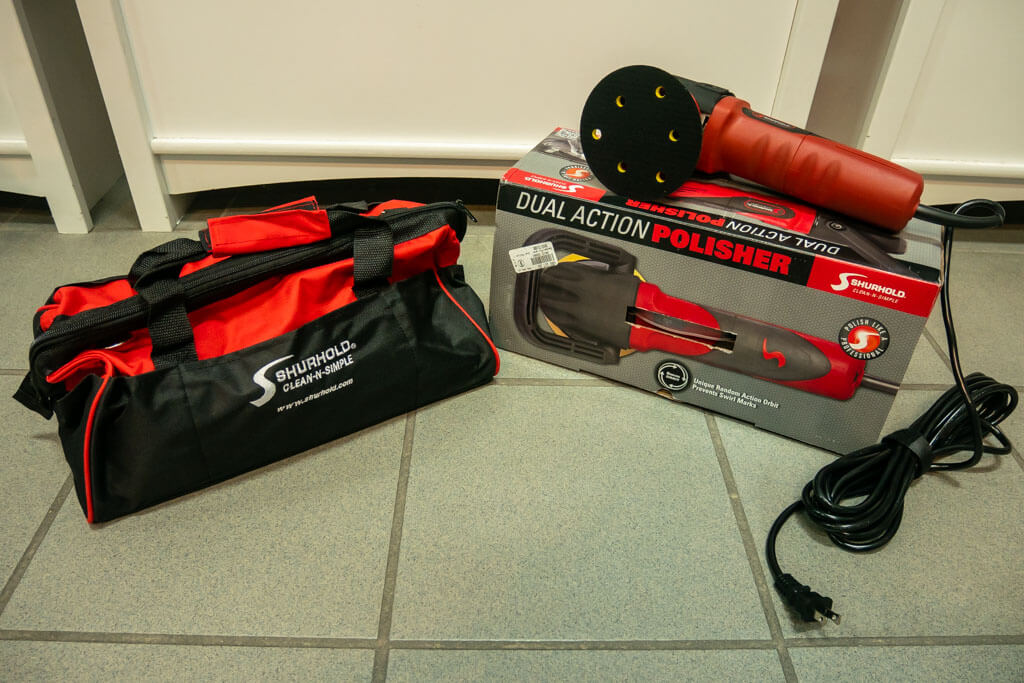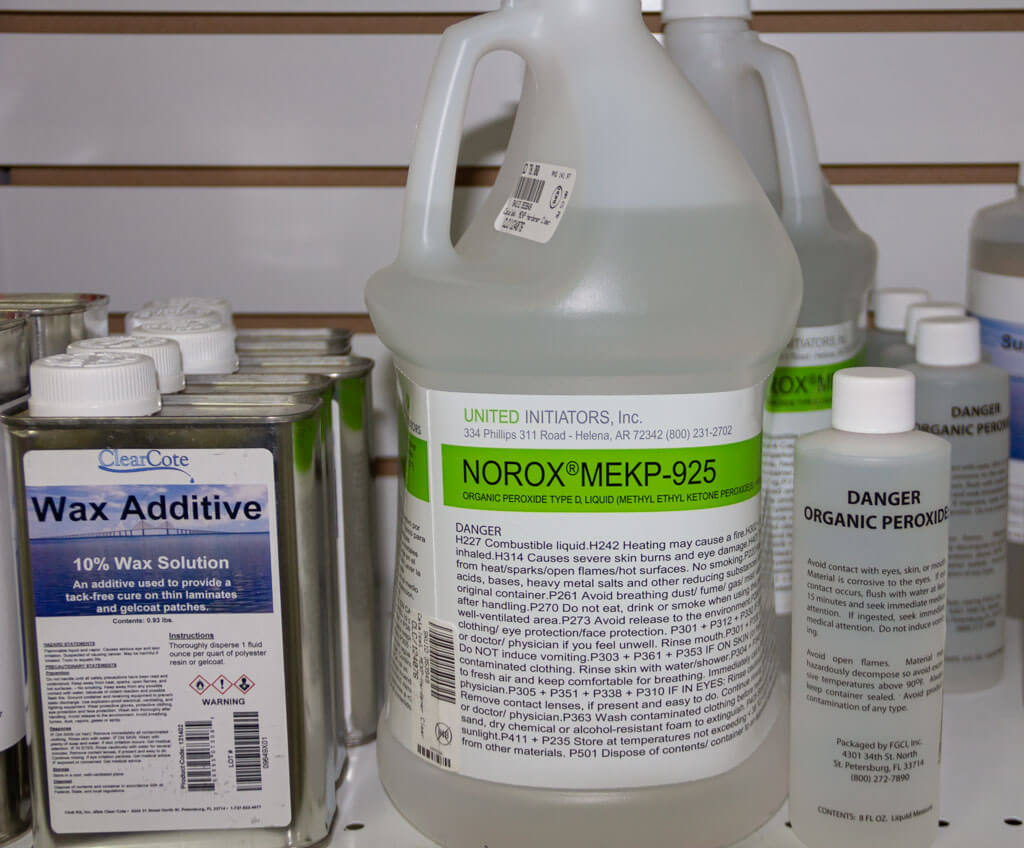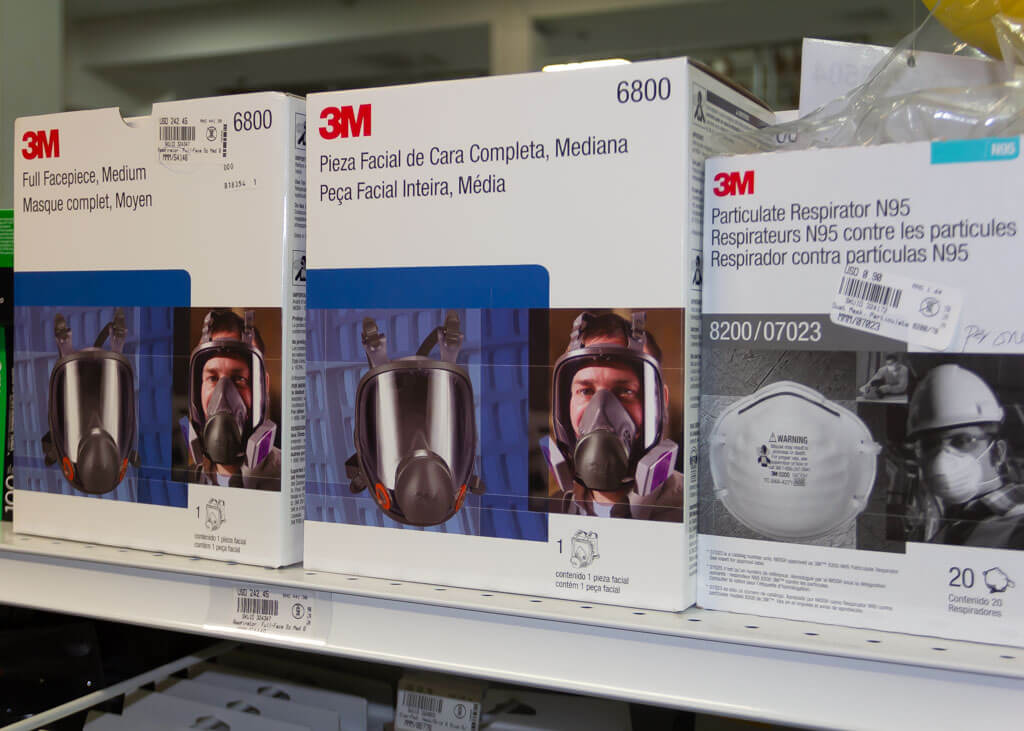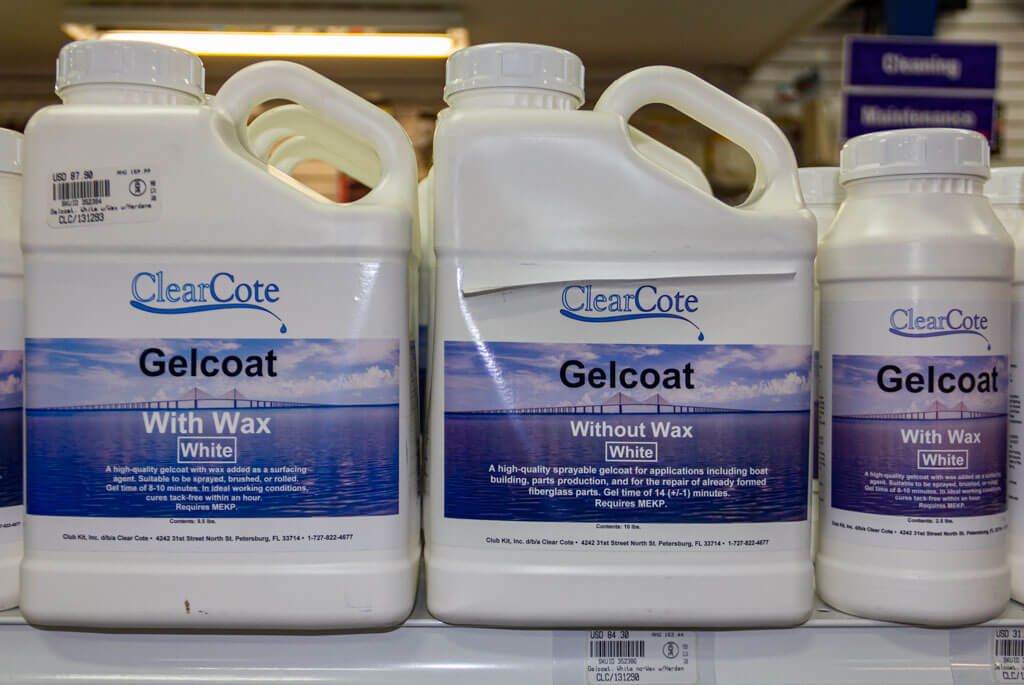(A complete product list is at the end of the article)
Are you a do-it-yourselfer? Or, more to the point, are you a brave do-it-yourselfer? If you answer yes to part two of the question, and you have looked at your fading hull and thought I would like to respray that but can’t really afford it then perhaps renewing the entire gel coat is a DIY job you’d be willing to tackle.
Daunting? A little. Hard work? A lot. But it’s a fraction of the cost of hiring a professional paint sprayer and it can be done without the aggravation that spraying entails (think tenting, masking and overspray).
Let’s jump right in with a list of what you will need to re-gelcoat your hull. You will need good-quality gelcoat and hardener (Methyl Ethyl Ketone Peroxide aka MEK-P). Mixing buckets, measuring cups and above all an accurate measure for the hardener. Without the latter you face absolute disaster as the gel will go off too quickly or not go off at all. You need a random orbit sander and lots of sanding discs, acetone for wiping the hull and general clean up. Dust masks, gloves and perhaps a 3M respirator. To apply the gel, you’ll need paint trays and solvent-resistant rollers with a 1/8” or ¼” nap. Don’t forget you will need scaffolding or some kind of platform.
Rollers, you say? Gelcoat can be sprayed on but not many DIYers have the correct spraying equipment and spraying requires a different set of skills, so let’s stick with the mop it on method because it’s something everyone can do and still achieve wonderful results.
The environment plays a part. Like painting, you don’t want a day that is too hot or too cold. Make sure there’s no rain forecast and try and avoid direct sunlight on the side of the hull you are working on. I recoated my boat in the Caribbean, where the sun is fierce, and so I worked in the early morning. In a hot climate, even greater care must be taken when measuring out the catalyst to gelcoat ratios. By adjusting the amount of catalyst, you can slow down curing times but follow instructions to the letter, get the percentage wrong and you face disaster. Buy a measuring jug/bottle that is designed for measuring MEK-P catalyst, or use a syringe.
Let’s talk chemicals and the damage they can cause to your health, and here I speak from experience. Just about every step of this DIY job involves some kind of health hazard, from the dust you will create, the chemicals you will handle, and the fumes you might inhale. Read all the labels and please protect yourselves, it’s not that difficult to do.
Still interested? Right …
Step one: Sand the entire hull with 150 grit paper to key the new gelcoat. (Note: You can’t gelcoat over paint. Old paint must be removed.)
After sanding, wipe the entire hull with acetone. Wipe it well.
Make sure you have everything ready? Remember, depending on the temperature, time is of the essence, you don’t want to be looking for a roller when you’ve already mixed in the catalyst.
Roll on the gelcoat as evenly as you can. You are aiming for a thickness of around 18 mils, which is approximately the thickness of a matchbook cover. If the gelcoat starts going off (you should have about 15 minutes) then discard it and mix more, maybe not quite as much this time. Same goes for the roller, change it if it starts to disintegrate.
Experts recommend two coats of gelcoat, perhaps three if you are going for a radical color change. After the first coat, wait about two hours until it’s tacky and then apply the second coat only this time add 1oz of wax per quart to the mix and roll on in the opposite direction to the first coat. The wax seals the surface from oxygen, causing the gelcoat to harden tack-free.
Once the gelcoat has cured, it’s time to sand. Start with 360 grit and work up through the papers: 400, 600, 800. Once you have finished sanding then you can buff the gelcoat with 800 grit compound. Use a buffer that turns at 1600-3000 RPM’s.
If your hull has a transom, then I would do that first, sort of a practice run. I would also recommend only doing one side of the hull at a time.
If you mess it up, then all is not lost, you just have to do it over again.
Good luck.
Author: Gary Brown/OceanMedia
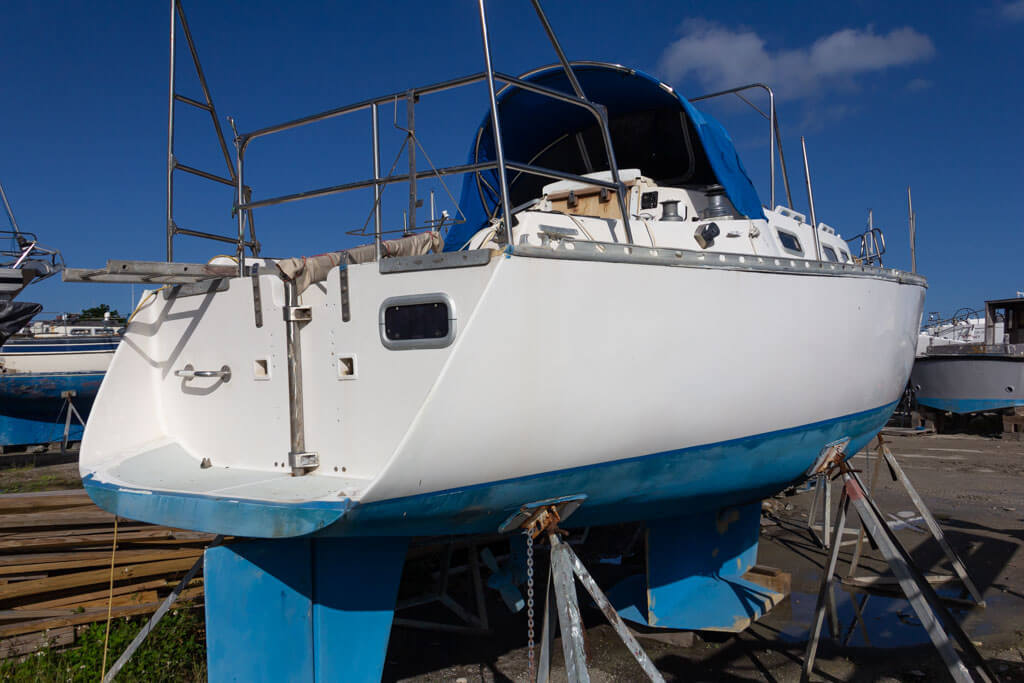
PRODUCT LIST:
Roller cages
Solvent-resistant rollers 1/8” or ¼” nap
Rags
Catalyst
Catalyst measuring jug or syringes marked in cc/ml
Gelcoat measuring tubs
Mixing sticks
Mixing buckets
PERSONAL PROTECTION

